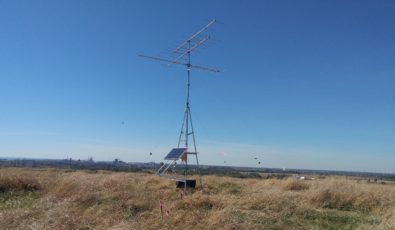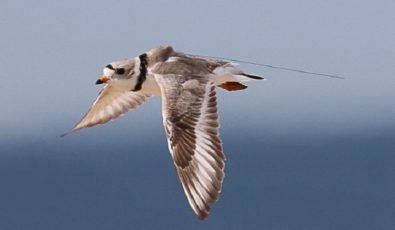OPG helps keep eyes on the skies for birds, bats and insects
Studying the movements of the countless birds, bats, and large insects that fly across our skies can be a difficult task, but a revolutionary technology is helping to map the travels of these winged animals.

The international Motus Wildlife Tracking System, a program of Bird Studies Canada (BSC) in partnership with Acadia University, boasts more than 350 automated radio telemetry stations spread across the Western Hemisphere. These receivers, which scan for signals 24 hours a day year-round, can keep tabs on animals that are affixed with miniaturized radio transmitters as they zoom by.
OPG, as part of its commitment to protect Ontario’s biodiversity, has been a big supporter of the multinational program. In 2016, BSC, which maintains more than 70 receiving towers, installed a receiver at OPG’s R.H. Saunders Generating Station (GS). This year, another receiver was put up on an elevated point at OPG’s Nanticoke site.
When results from the many telemetry stations are combined, the network can track more than 8,000 tagged flying organisms from 85 different species, including the endangered piping plover and red knot birds, across a diversity of landscapes covering thousands of kilometres. It has proven to be a valuable resource for conservation efforts.
"We can gather a wealth of data about a bird’s migration routes, where it stops, and how long it stays in certain areas which will help to inform conservation efforts.”Stuart Mackenzie, Migration Program Manager at Bird Studies Canada
“Migratory birds cover thousands of kilometres in their annual journeys, which made studying them very difficult from a conservation standpoint,” explained Stuart Mackenzie, Migration Program Manager at BSC. “Thanks to Motus, we can gather a wealth of data about a bird’s migration routes, where it stops, and how long it stays in certain areas which will help to inform conservation efforts.”

Researchers can also glean important information on species’ survival rates and when they are migrating, which can illustrate the impact climate change and habitat loss is having on declining grassland birds, bats, and insect species like monarch butterflies.
The latest receiver installed on the site of the decommissioned Nanticoke coal plant, located on the north shore of Lake Erie, is in a good spot to pick up signals from tagged animals.
“It’s one of the highest points along the shoreline, so it’s very open and has excellent reception,” said Gerry McKenna, Section Manager of Environment (Corporate Programs) with OPG.
OPG is now looking at hosting more receivers at other sites to help fill gaps in coverage. The next ideal location could be Pickering Nuclear GS, which is situated next to Lake Ontario, McKenna said.
OPG’s operations are ideally situated along the Lake Erie, Lake Ontario, and St. Lawrence River shorelines. This is important as these areas are geographically aligned with the migratory flyways of many birds, bats and insects.
Subscribe and stay informed
Sign up to receive the latest news, project updates, and event information from OPG.